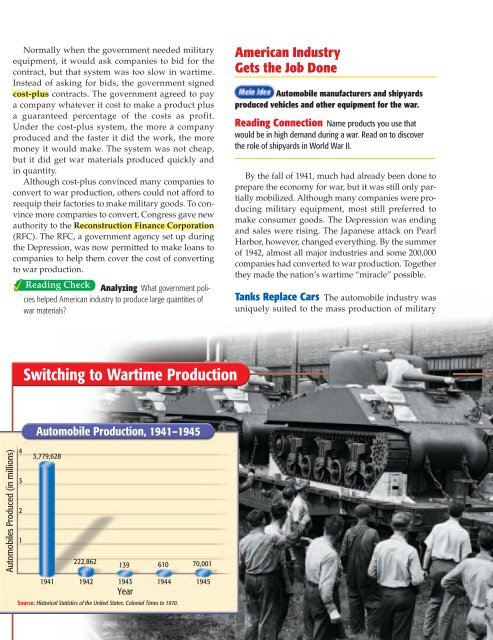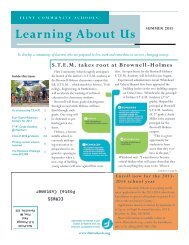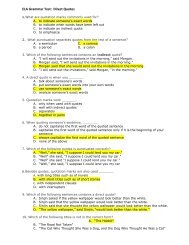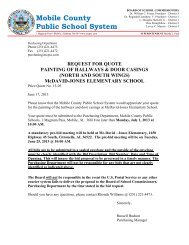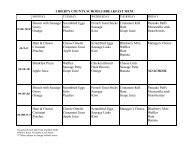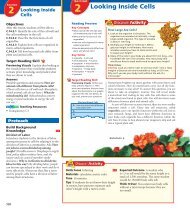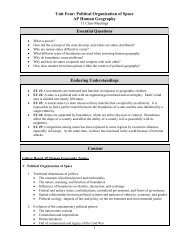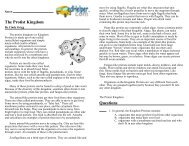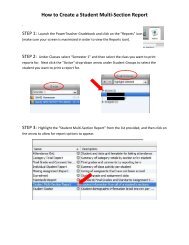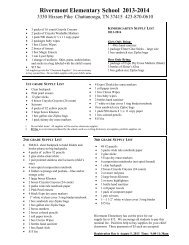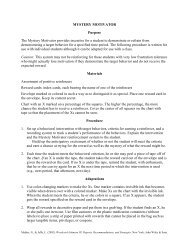Chapter 12: America and World War II, 1941-1945 - Georgia ...
Chapter 12: America and World War II, 1941-1945 - Georgia ...
Chapter 12: America and World War II, 1941-1945 - Georgia ...
Create successful ePaper yourself
Turn your PDF publications into a flip-book with our unique Google optimized e-Paper software.
Normally when the government needed military<br />
equipment, it would ask companies to bid for the<br />
contract, but that system was too slow in wartime.<br />
Instead of asking for bids, the government signed<br />
cost-plus contracts. The government agreed to pay<br />
a company whatever it cost to make a product plus<br />
a guaranteed percentage of the costs as profit.<br />
Under the cost-plus system, the more a company<br />
produced <strong>and</strong> the faster it did the work, the more<br />
money it would make. The system was not cheap,<br />
but it did get war materials produced quickly <strong>and</strong><br />
in quantity.<br />
Although cost-plus convinced many companies to<br />
convert to war production, others could not afford to<br />
reequip their factories to make military goods. To convince<br />
more companies to convert, Congress gave new<br />
authority to the Reconstruction Finance Corporation<br />
(RFC). The RFC, a government agency set up during<br />
the Depression, was now permitted to make loans to<br />
companies to help them cover the cost of converting<br />
to war production.<br />
Reading Check Analyzing What government policies<br />
helped <strong>America</strong>n industry to produce large quantities of<br />
war materials?<br />
<strong>America</strong>n Industry<br />
Gets the Job Done<br />
Automobile manufacturers <strong>and</strong> shipyards<br />
produced vehicles <strong>and</strong> other equipment for the war.<br />
Reading Connection Name products you use that<br />
would be in high dem<strong>and</strong> during a war. Read on to discover<br />
the role of shipyards in <strong>World</strong> <strong>War</strong> <strong>II</strong>.<br />
By the fall of <strong>1941</strong>, much had already been done to<br />
prepare the economy for war, but it was still only partially<br />
mobilized. Although many companies were producing<br />
military equipment, most still preferred to<br />
make consumer goods. The Depression was ending<br />
<strong>and</strong> sales were rising. The Japanese attack on Pearl<br />
Harbor, however, changed everything. By the summer<br />
of 1942, almost all major industries <strong>and</strong> some 200,000<br />
companies had converted to war production. Together<br />
they made the nation’s wartime “miracle” possible.<br />
Tanks Replace Cars The automobile industry was<br />
uniquely suited to the mass production of military<br />
Switching to <strong>War</strong>time Production<br />
Automobile Production, <strong>1941</strong>–<strong>1945</strong><br />
Automobiles Produced (in millions)<br />
4<br />
3<br />
2<br />
1<br />
3,779,628<br />
222,862<br />
139 610 70,001<br />
<strong>1941</strong> 1942 1943 1944 <strong>1945</strong><br />
Year<br />
Source: Historical Statistics of the United States: Colonial Times to 1970.


